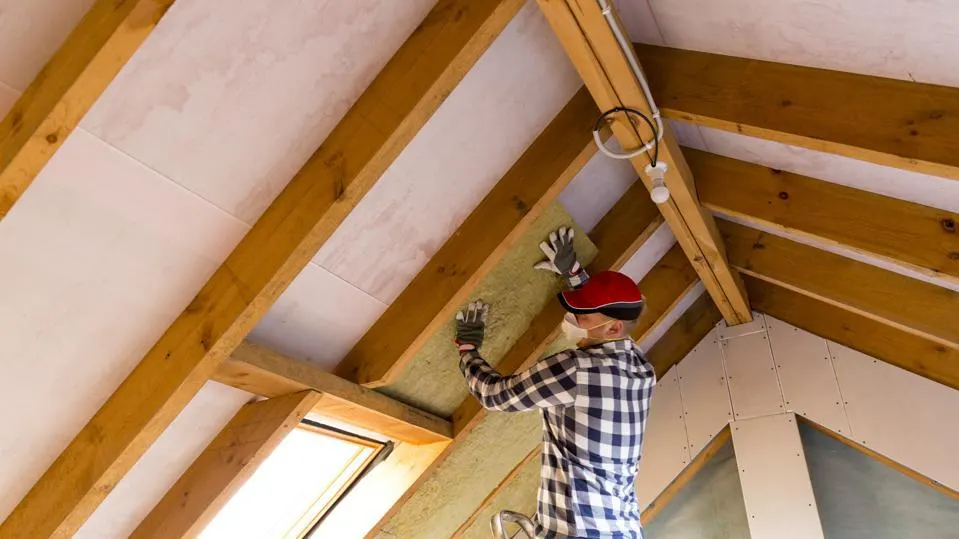As homeowners seek to enhance the energy efficiency, durability, and overall performance of their homes, the roofing industry is witnessing a growing interest in reflective and insulated roofing materials. These advanced materials offer numerous benefits, from reducing energy costs to improving indoor comfort and extending the lifespan of roofs.
This article delves into the advantages of reflective and insulated roofing materials, drawing on insights from residential roofing specialists to provide a comprehensive understanding of their benefits and applications.
Introduction
Roofing is a critical component of any home, significantly impacting its energy efficiency, structural integrity, and aesthetic appeal. Traditional roofing materials, while effective in many ways, often fall short in terms of energy efficiency and thermal performance. Reflective and insulated roofing materials have emerged as innovative solutions to these challenges, offering enhanced energy savings, improved comfort, and greater durability. This article explores the benefits of these materials, supported by expert insights from residential roofing specialists.
Understanding Reflective Roofing Materials
What Are Reflective Roofing Materials?
Reflective roofing materials are designed to reflect more sunlight and absorb less heat than standard roofing materials. This reflective property helps to keep the roof surface cooler, which can significantly reduce the amount of heat transferred into the building. Common types of reflective roofing materials include cool shingles, metal roofing with reflective coatings, and reflective membranes.
How Do Reflective Roofing Materials Work?
Reflective roofing materials work by utilizing specialized coatings or pigments that have high solar reflectance. Solar reflectance refers to the ability of a material to reflect solar energy from its surface back into the atmosphere. The higher the solar reflectance, the less heat the roof absorbs. By reflecting a significant portion of solar radiation, reflective roofing materials help to reduce the roof’s surface temperature and, consequently, the amount of heat that enters the home.
Benefits of Reflective Roofing Materials
Energy Savings
One of the most significant benefits of reflective roofing materials is their potential for energy savings. By reflecting more sunlight and absorbing less heat, these materials reduce the need for air conditioning, particularly during hot summer months. According to the U.S. Department of Energy, reflective roofs can reduce cooling energy costs by up to 15%. This reduction in energy consumption not only lowers utility bills but also decreases the overall demand for electricity, contributing to a more sustainable energy system.
Improved Indoor Comfort
Reflective roofing materials help maintain a more consistent and comfortable indoor temperature by reducing the amount of heat that enters the home. This can be particularly beneficial in regions with hot climates, where excessive heat can make indoor spaces uncomfortable and increase reliance on air conditioning. By keeping the home cooler, reflective roofs enhance indoor comfort and create a more pleasant living environment.
Extended Roof Life
Reducing the roof’s surface temperature can also extend the lifespan of roofing materials. High temperatures can cause roofing materials to degrade more quickly, leading to issues such as cracking, warping, and premature aging. Reflective roofing materials help mitigate these problems by lowering the roof’s thermal stress, thereby enhancing its durability and longevity. This can result in fewer repairs and replacements over the roof’s lifespan, saving homeowners money in the long run.
Environmental Impact
Reflective roofing materials can have a positive impact on the environment by reducing the urban heat island effect. The urban heat island effect occurs when urban areas experience higher temperatures than their rural surroundings due to the concentration of heat-absorbing surfaces such as roofs and pavements. By reflecting more sunlight, reflective roofs help to lower ambient temperatures, which can improve air quality, reduce greenhouse gas emissions, and mitigate the effects of climate change.
Exploring Insulated Roofing Materials
What Are Insulated Roofing Materials?
Insulated roofing materials are designed to provide enhanced thermal insulation, reducing the amount of heat transfer between the interior and exterior of a building. These materials typically consist of a core of insulating material, such as foam or fiberglass, sandwiched between layers of roofing material. Insulated roofing panels, insulated metal roofs, and insulated membranes are common examples.
How Do Insulated Roofing Materials Work?
Insulated roofing materials work by creating a thermal barrier that minimizes heat transfer through the roof. The insulating core reduces the flow of heat into the building during hot weather and prevents heat from escaping during cold weather. This thermal barrier helps to maintain a more stable indoor temperature, reducing the need for heating and cooling and improving overall energy efficiency.
Benefits of Insulated Roofing Materials
Enhanced Energy Efficiency
Insulated roofing materials significantly improve a home’s energy efficiency by reducing the amount of heat that enters or escapes through the roof. This can lead to substantial energy savings, as heating and cooling account for a large portion of a home’s energy consumption. According to the Environmental Protection Agency (EPA), well-insulated homes can save up to 20% on heating and cooling costs. Insulated roofs contribute to these savings by providing an effective thermal barrier that reduces the need for mechanical heating and cooling systems.
Improved Comfort and Indoor Air Quality
By minimizing heat transfer, insulated roofing materials help to maintain a more consistent indoor temperature, enhancing comfort for occupants. This can be especially beneficial in regions with extreme temperatures, where maintaining a comfortable indoor environment can be challenging. Additionally, improved insulation can contribute to better indoor air quality by reducing the infiltration of outdoor pollutants and allergens.
Soundproofing Benefits
In addition to their thermal properties, insulated roofing materials can also provide soundproofing benefits. The insulating core helps to absorb and dampen noise from external sources such as traffic, airplanes, and weather. This can create a quieter and more peaceful indoor environment, enhancing the overall comfort and quality of life for homeowners.
Durability and Structural Support
Insulated roofing materials often provide additional structural support, enhancing the overall strength and durability of the roof. The insulating core can add rigidity to the roofing material, making it more resistant to damage from environmental stressors such as wind, hail, and heavy snowfall. This increased durability can result in fewer repairs and a longer lifespan for the roof, providing long-term cost savings for homeowners.
Specialist Insights on Reflective and Insulated Roofing Materials
Installation and Maintenance Considerations
According to roofing specialists, proper installation is crucial for maximizing the benefits of reflective and insulated roofing materials. Ensuring that these materials are installed correctly can help to prevent issues such as leaks, thermal bridging, and reduced performance. Specialists recommend working with experienced roofing contractors who are familiar with the specific requirements of reflective and insulated roofing systems.
Regular maintenance is also important for maintaining the performance and longevity of reflective and insulated roofs. This includes routine inspections to check for damage, cleaning to remove debris and algae, and addressing any issues promptly to prevent further damage. Roofing specialists emphasize the importance of proactive maintenance to ensure that reflective and insulated roofs continue to provide optimal energy efficiency and protection.
Choosing the Right Materials
Selecting the right reflective and insulated roofing materials depends on various factors, including the climate, the design of the home, and the homeowner’s specific needs and preferences. Roofing specialists advise considering the following factors when choosing these materials:
- Climate: In hot climates, high-reflectance materials are particularly beneficial for reducing cooling costs, while in cold climates, high-insulation materials can help to retain heat and reduce heating costs.
- Building Design: The design and orientation of the home can influence the effectiveness of reflective and insulated roofing materials. Specialists recommend conducting a thorough assessment to determine the most suitable options.
- Material Compatibility: It is important to choose materials that are compatible with the existing roofing system and structure. Specialists can provide guidance on selecting materials that work well together and complement the overall design of the home.
- Budget: While reflective and insulated roofing materials can offer long-term cost savings, they may have higher upfront costs compared to traditional materials. Specialists recommend evaluating the potential return on investment and long-term benefits when considering these materials.
Case Studies and Real-World Applications
Roofing specialists often highlight case studies and real-world applications to illustrate the benefits of reflective and insulated roofing materials. For example, a case study of a residential home in a hot climate may demonstrate significant energy savings and improved indoor comfort after installing a reflective roof. Similarly, a case study of a home in a cold climate may show how insulated roofing materials helped to reduce heating costs and enhance thermal comfort.
These real-world examples provide valuable insights into the practical benefits of reflective and insulated roofing materials and can help homeowners make informed decisions about their roofing options.
Conclusion
Reflective and insulated roofing materials offer numerous benefits, from energy savings and improved indoor comfort to enhanced durability and environmental sustainability. As homeowners seek to create more energy-efficient and resilient homes, these innovative roofing solutions are becoming increasingly popular. Drawing on insights from residential roofing specialists, this article has highlighted the advantages of reflective and insulated roofing materials and provided practical advice on their installation and maintenance.
By understanding the benefits and applications of these advanced roofing materials, homeowners can make informed decisions that enhance the performance and value of their homes. As the roofing industry continues to evolve, staying informed about the latest trends and technologies in reflective and insulated roofing will be essential for homeowners, builders, and architects alike.

